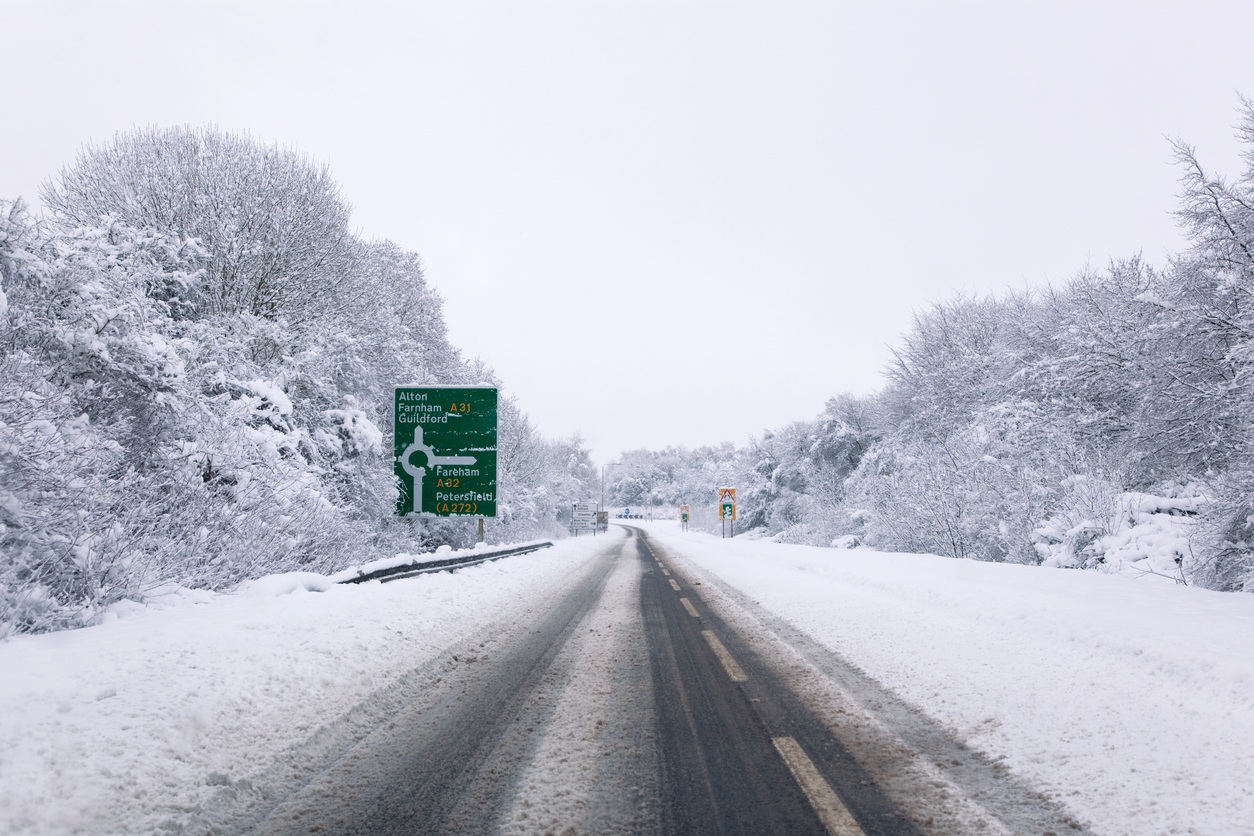When snow arrives in the UK, for many of those who would normally be heading to work, university or school, taking a day off may well be the safest course of action.
But millions of people will still be travelling in their cars despite the snowy weather – and for whom being prepared for the icy road conditions is of great importance.
Here are 10 tips and facts for those driving on Britain's snow-and-ice covered roads...

1. Clear the snow from your vehicle or risk a fine
Under Rule 229 of the Highway Code, drivers must clear the snow from their vehicles before moving off.
Naturally, windows must be clear – but snow on lights and number plates must be removed too.
Those who fail to do this may face a fine of £60 and three licence penalty points.
In fact, you should clear every surface; if a piece of snow from your vehicle falls into the path of another road user you could face an on-the-spot fine of £100.
2. Use appropriate tools to clear ice
Invest in a quality scraper and/or de-icer.
Don't be tempted to use other items to hand (credit cards, CDs etc.) to clear the ice from your vehicle, and opt for de-icer instead of hot water, which might cause the glass to break if it gets into a crack.
3. Ensure your clothing does not make driving more difficult
Driving in heavy jackets and gloves can make it harder to control your vehicle. Opt for thinner layers that keep you sufficiently warm but do not get in the way of steering or gear changing.
4. Increase distances on the road in icy conditions
When the roads are icy, leave more space than normal between you and the vehicle in front.
Reduce your speed to better stay in control.
5. Check your tyres' tread depth
The legal minimum is 1.6mm, but you might think about investing in winter tyres with tread depths of 3mm, offering better grip in icy conditions.
6. Consider investing in snow socks or chains
A cheaper alternative to winter tyres, snow socks and tyre chains can give you much-needed grip in the snow, with the latter being most effective.
Both must be removed once you’re on a clear stretch of road.
7. Cover your car to tackle frost
Frost can be troublesome to remove from your windows – but can usually be prevented simply by placing an old sheet, blanket or section of cardboard over the top of your vehicle over night.
8. Plan your journey and leave more time
Make sure you know ahead of time about any congested roads on your route.
Driving to work in snowy or icy conditions is likely to take longer than usual, so pencil in additional time. Do not rush, even if you risk being late.
Carry a de-misting pad; torch; hi-vis vest so you are visible in case you need to get out following a breakdown; a blanket for warmth; screen wash; de-icer; scraper; map; phone charger; warning triangle; first aid kit; shovel for removing snow; and a section of carpet for wheel traction if you get stuck.
Such items are even more important if you're planning a longer journey.
10. If it's not safe, don’t risk it
If the journey to work is too risky, your employer cannot insist you come in. However, your boss is not obliged to pay you if you do take the day off – unless they have announced your workplace is closed for the day, in which case they cannot make you take it as holiday or dock your pay.




